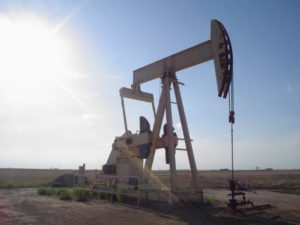Everything, everything, I mean, EVERYTHING we use and have comes from the earth. That’s the clothes we wear, the homes we live in, the food we eat, the vehicles we use, the phones we talk on, etc., etc., etc. Did you ever think about how glass is made? What about the soda can you might drink out of? Where does that come from? And that little plastic tab that comes on your bread so it can stay fresh? It’s crazy to think all of that came from the earth. At Sustainable Schools we often focus on how to reduce waste by recycling or reusing but the first “R” of Reduce, Reuse and Recycle (we like to say there are many more Rs) is first for a reason.
When we know the work and materials that go into making a product, the idea of using something only once doesn’t seem to make sense – and therefore reducing our consumption of that product helps to save our natural resources! In this series, we will explore how things are made from our natural resources and how its production affects our environment.
Take a look around you, how many items do you see that are made with plastic? I see a folder, an organizer shelf, my computer chair, almost everywhere I look I can see at least one item that is made with plastic! Plastic is a really strong and durable material that can be molded into almost any shape and color, and is very beneficial for the medical field and in making other useful products like car parts, keyboards, and furniture to name a few. But, plastic also has its negatives, particularly single-use plastic. This week’s lesson is going to focus on single-use plastic, which are items like plastic utensils, baggies (like Ziploc), disposable water bottles, straws, items that are only used once, and are then thrown out.

So, how is plastic made?
Creating plastic is yet another chemistry heavy process, but here are the most basic steps:
- Crude oil is extracted from the ground. Everything, and I mean EVERYTHING, comes from the Earth.

- The oil is then delivered to a facility where it is heated up to high temperatures and the oil and gas molecules are bonded together to form polymers (which are long chains of atoms bonded to one another) and is now raw plastic.

An example of plastic as a polymer, which are made of repeating chains of smaller chemical units. - Different chemicals are added to the plastic to make it the desired material, which could be making it harder (like the plastic used for laundry detergent containers) or more flexible and lightweight (like disposable water bottles). Color may also be added here to the mix. There are 7 different types of plastic with different properties and chemicals that can be made. Refer to the picture below for some examples.

- After the chemicals and color is added, the mixture can be poured into a mold, or formed into the desired shape, and when it dries, you have a finished product!
Environmental Impacts
Most of the impacts to the environment that come with plastic are the extraction of the oil and natural gas, creating and transporting the plastic, and the end life of the plastic. There are many other environmental impacts throughout the process like the construction of roads and pipelines (which comes with deforestation and the use of more oil and natural gas), and the machines need fuel to run, and chemicals required in order to make the plastic harder or lighter. But for now, we will just go into depth about the impacts of extraction and the end life of plastic.
Fracking — Extraction of Oil and “Natural” Gas
The extraction of oil and gas is called fracking. In order to extract the material, a lot of freshwater is required (which is a limited resource!) in the process, as well as a lot of chemicals. The chemicals used can contaminate the groundwater people rely on for their drinking water. Also, oil and gas are fossil fuels, a non-renewable energy source. That means it is a natural resource that will run out, and it produces greenhouse gases when burned.
In addition, fracking wells that are drilled thousands of feet down may change geology in a potentially negative way, leading to earthquakes.
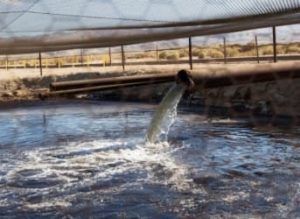
Fracking fluid and other drilling wastes are dumped into an unlined pit in California.
End Life of Plastic
Most plastic ends up in landfills where they will be for hundreds of years. A lot of the plastic is not recycled for a variety of reasons. One reason could be that which plastic is recyclable may not be very clear, or what one recycling facility takes may be different than what another facility takes, so it ends up in the trash. Another reason could be that recycling is a business with a product that is vulnerable to the ups and downs of commodities markets. Sometimes it’s cheaper for packagers to make things out of raw, brand new plastic, than it is to buy recycled plastic.

A person in Malaysia collecting plastic from a garbage site.
Since plastic is so lightweight, in the transportation of plastic to the landfill, some of it is blown away. This plastic reaches the ocean either through waterways – our rivers, creeks and streams – carrying the plastic, or the wind blows it into the water. Animals eat the plastic thinking it is food, like plastic bags are mistaken for jellyfish when they are floating in the water. This makes animals sick when they eat it, and some even end up dying from it. Plastic can also get wrapped around animals necks or other body parts, harming them.

Some plastic gets littered as well. Whether we intentionally litter or if it happens by accident, plastic litter will also end up in our fresh and ultimately, our marine waters. Swirled by currents, plastic litter accumulates over time at the center of major ocean vortices forming “garbage patches”, which are large masses of floating debris fields across the seas. There are 5 garbage patches in our oceans, and the Great Pacific Garbage Patch is 2 times the size of Texas.
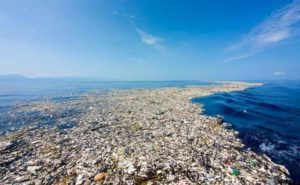 D
D
A portion of the Great Pacfic Garbage Patch.
Furthermore, plastic will never go away. It will degrade partially in the ocean, but will stay as really small pieces called microplastic forever.
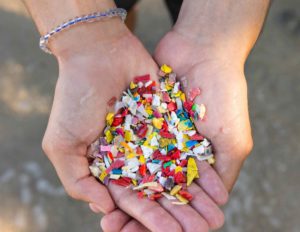
So, what can you do?
First, you can REDUCE your consumption of plastic, then you can REUSE your plastic. Lastly, you can RECYCLE your plastic that is recyclable. Facilities can use your recycled plastic to make new plastic, without drilling for more oil and gas. Recycled plastic can save a lot of natural resources like water and oil that way! Here in Whatcom County, some of the plastic we recycle is made into new plastic products. After our plastic is picked up, it gets sorted, and some is transported to California where it brokers our curbside plastics to manufacturers of injection molded products like new toys, housewares, and parts for small appliances. Some of the plastic also gets sent to Malaysia.
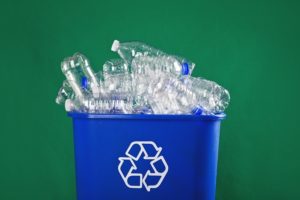
As mentioned earlier, there are 7 different types of plastic. Have you noticed that your shampoo bottles feel like a different plastic than disposable water bottles? And have you seen the numbers on things you buy that have the little arrows around it and wondered what they meant? Here is a chart that shows more about what those numbers mean, and whether or not that plastic item can actually be recycled.
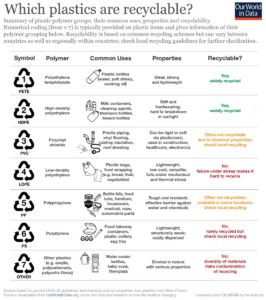
There are also many other ways you can reduce the amount of plastic that is produced, and the amount of plastic pollution that gets in our oceans and waterways. Here is just a few of the ways:
- If you have plastic bags or clean plastic film, save them, you can drop them off at Sanitary Service Company.
- Instead of buying garbage bags, you can put your garbage in empty chip bags and then throw it out.
- You can also buy things that are in glass bottles instead of plastic bottles.
- You can use beeswax wraps or glass storage containers instead of wrapping your food in plastic wrap.
- Buy your items in bulk from places where you can.
- Get one large jug of juice and use a reusable cup instead of a pack of individual wrapped juice boxes.
- Try and choose products with the least amount of packaging.
Take Action
Not only can you reduce the amount of plastic that you use, but you can also upcyle the plastic that you have!
Make a box to hold your favorite items using a plastic jug like in this project!

Here are a few other fun ideas:
- If you know how to crochet, you can crochet together plastic bags and create a durable reusable bag.
- Or you can use plastic containers to make a bird house or to grow plants in!
- You can also make your own alternative items to plastic — like making your own beeswax wraps instead of using plastic wrap!

We would love to see what you do.
Please share with us how you decide to reuse plastic! Take a picture or video and send them to us or tag us on Instagram (@resources_protects)!
Continue learning
There are lots of topics for you to choose from. Don’t stop here; move on to discover another lesson! New lessons uploaded each week.

